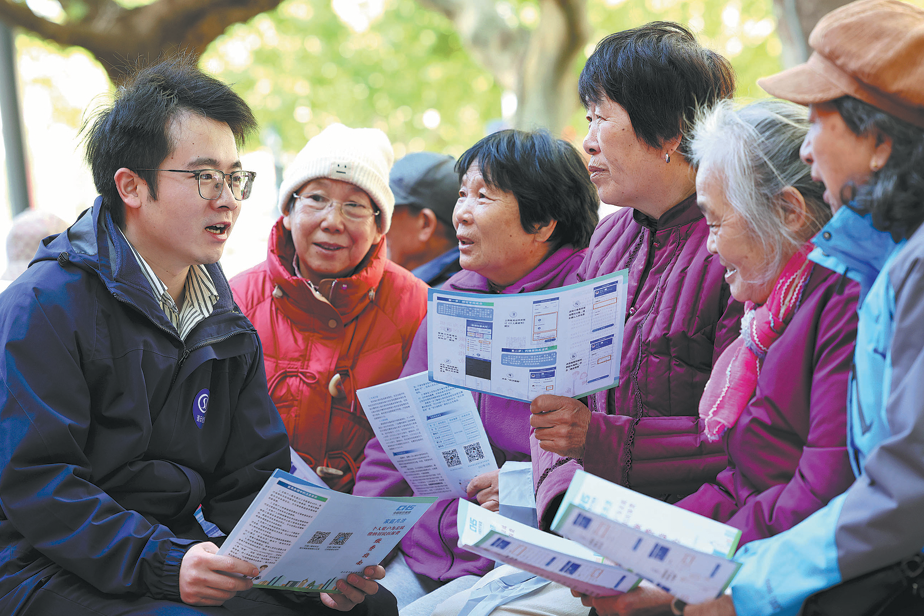Trajectory for resilient, inclusive growth
By Axel van Trotsenburg | chinadaily.com.cn | Updated: 2023-03-27 09:48

This year China's economy is expected to recover, fueled primarily by a rebound in domestic demand. These improved near-term prospects offer an important opportunity for policymakers to refocus their efforts on achieving the country's three long-term development objectives:
- to become a high-income country by 2035 through productivity-led and environmentally sustainable growth;
- to peak carbon emissions before 2030 and to achieve carbon neutrality before 2060; and
- to spread wealth gains more equally among the Chinese people.
There are several key structural reforms that could support China's transition from high-speed to high-quality development.
First, reviving productivity growth remains a central priority. China's productivity growth has slowed from an average of more than 3 percent in the decade before the 2008 global financial crisis to about 1 percent in the decade after. Together with a shrinking workforce, this is weighing on China's medium-term growth potential.
To revive productivity growth, policymakers have focused on fostering innovation. China's innovation capacity has improved steadily in recent years, and the country is a global leader in e-commerce, financial technology, high-speed trains, electric cars, and other sectors.
Yet China's average productivity level is still about half of the OECD average. This means China still has much to gain from catching up through adoption and diffusion of advanced technologies across the country.
Another source of productivity growth is more efficient resource allocation. This will require deepening reforms to increase the role of markets, the private sector and competition. Stronger institutions to manage insolvency, enterprise restructuring, and bankruptcy could facilitate more dynamic companies, enabling market entry and exit, and the reallocation of resources toward more productive enterprises.
Second, to reach its climate goals, China will need to transition faster to carbon neutrality than today's advanced economies, and at lower levels of per capita income and emissions. This will require significant investment. According to World Bank estimates, China needs an additional $14-17 trillion — or 1.1 percent of GDP annually on average from now until 2060 — for green investment in the transport and electricity sectors.
However, investment alone will not be sufficient. Reforms will play a crucial role. Such reforms include an economy-wide use of carbon pricing, energy market reforms, and stronger incentives for low carbon land use in agriculture. Through innovation and investment, the private sector can play a vital role in the green transition, but it will need a predictable regulatory environment and a level playing field with access to finance and markets.
The transition to low-carbon and climate-resilient development will create economic and social risks especially for some of China's less-developed interior provinces and communities, which are more dependent on coal and other carbon-intensive industries. These risks need to be managed to ensure the transition is not just fast but also fair.
Two years ago, China reached a remarkable milestone: eradicating extreme poverty (defined as those living on less than$1.90 per day). As China is set to become a high-income country, it will need to confront new inequality challenges. While declining in recent years, inequality in income and opportunity between coastal and interior provinces, and between rural and urban areas, remains a concern. We (at the World Bank) estimate that around 200 million Chinese continue to live on $6.85 per day or less — the standard the World Bank uses to measure poverty in upper middle-income countries. And these low-income households are particularly vulnerable to climate change, transition risks and other economic shocks.
More progressive fiscal policies and stronger safety nets could help stem inequality. On the revenue side, enhancing the role of progressive income and property taxes could contribute to lowering inequality. On the spending side, mobilizing public investment in health and education could help narrow the gap in access to quality education and health services across regions and between urban and rural areas. Progress toward establishing a unified, nationally funded social security system would equalize benefit levels while allowing workers to move across provinces without losing retirement or other social benefits.
Underlying these reform proposals is the ability of local governments to finance them. Greater revenue autonomy and predictability of inter-government transfers will ensure that local governments have the resources to expand social safety nets, improve the quality of public services, and invest in climate mitigation and adaptation.
Many of these reforms are already priorities in China's 14th Five-Year Plan (2021-25). The recovery now offers a unique opportunity to redouble efforts to accelerate China's transition to green, resilient and inclusive development. At the World Bank, we look forward to continuing our partnership with China to turn these economic shifts into growth opportunities that will benefit its people and contribute to a more sustainable future.
The author is World Bank managing director of operations.
The views don't necessarily reflect those of China Daily.
If you have a specific expertise, or would like to share your thought about our stories, then send us your writings at opinion@chinadaily.com.cn, and comment@chinadaily.com.cn.
























